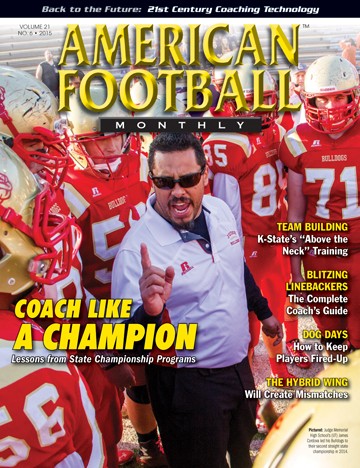Article CategoriesAFM Magazine
|
Speed Report: The Challenges of Teaching Football Speedby: Dale BaskettFootball Speed Specialist © More from this issue The first step toward teaching football speed is dealing with velocity and angles that change rapidly. Secondly, you must provide a progressive training system that is relative to speed and movement physically, mentally, and technically. The nature of the game provides various challenges to movement speed, angle changes, frequency changes, and rapid acceleration. Your teaching must fit these practicums because, unlike track sprinting, the technical application for football speed is not all linear. In fact, technical control is being challenged each time linear velocity is displaced. This makes football speed and movement very complex. Rotational synchronization (synch) of arms and legs becomes altered instantly when the velocity of movement is directionally displaced. No matter how small the displacement of movement change, the loss wi....The full article can only be seen by subscribers.
|
|
|||||||
| HOME |
MAGAZINE |
SUBSCRIBE | ONLINE COLUMNISTS | COACHING VIDEOS |
Copyright 2025, AmericanFootballMonthly.com
All Rights Reserved





